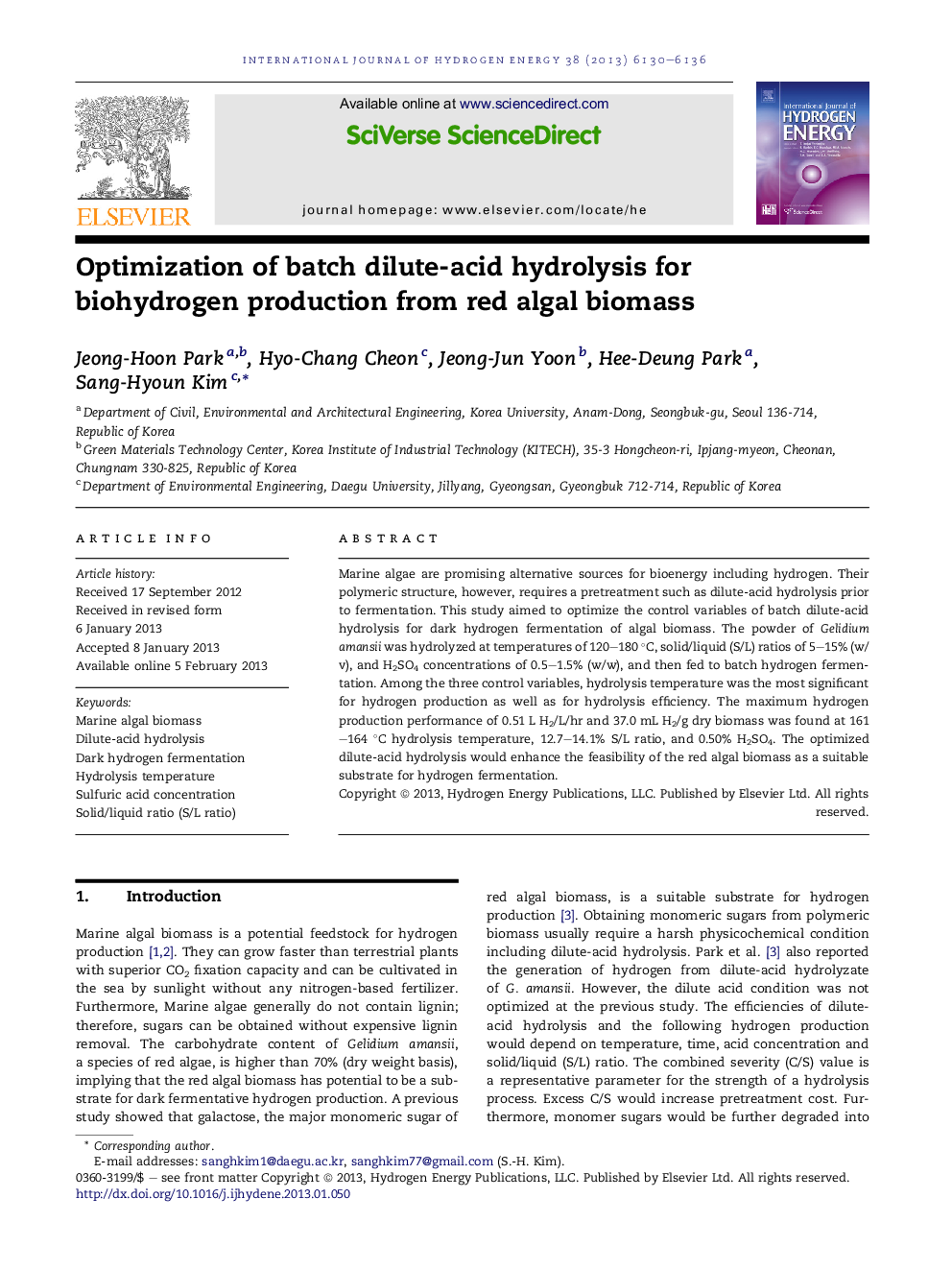| Article ID | Journal | Published Year | Pages | File Type |
|---|---|---|---|---|
| 1281731 | International Journal of Hydrogen Energy | 2013 | 7 Pages |
Marine algae are promising alternative sources for bioenergy including hydrogen. Their polymeric structure, however, requires a pretreatment such as dilute-acid hydrolysis prior to fermentation. This study aimed to optimize the control variables of batch dilute-acid hydrolysis for dark hydrogen fermentation of algal biomass. The powder of Gelidium amansii was hydrolyzed at temperatures of 120–180 °C, solid/liquid (S/L) ratios of 5–15% (w/v), and H2SO4 concentrations of 0.5–1.5% (w/w), and then fed to batch hydrogen fermentation. Among the three control variables, hydrolysis temperature was the most significant for hydrogen production as well as for hydrolysis efficiency. The maximum hydrogen production performance of 0.51 L H2/L/hr and 37.0 mL H2/g dry biomass was found at 161–164 °C hydrolysis temperature, 12.7–14.1% S/L ratio, and 0.50% H2SO4. The optimized dilute-acid hydrolysis would enhance the feasibility of the red algal biomass as a suitable substrate for hydrogen fermentation.
► Batch dilute acid hydrolysis was optimized for H2 production from red algal biomass. ► Hydrolysis temperature was the most significant control variable. ► The maximum hydrolysis efficiency was 69.7%. ► The maximum hydrogenic performance was 0.51 L/L/hr and 37.0 mL H2/g dry algae. ► The generation of potential inhibitors rapidly increased at the combined severity over 2.5.
